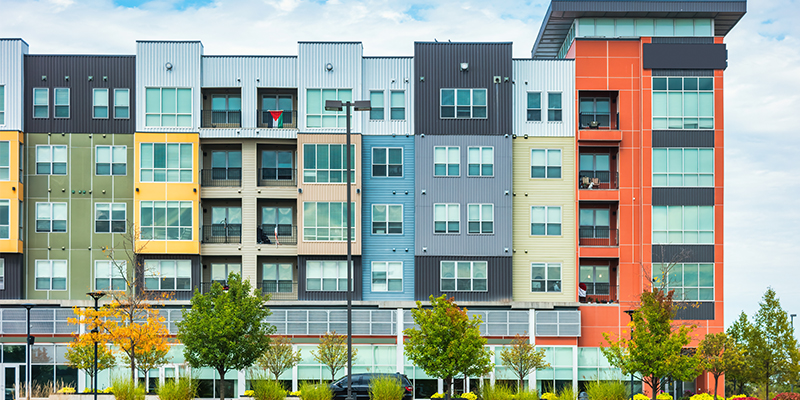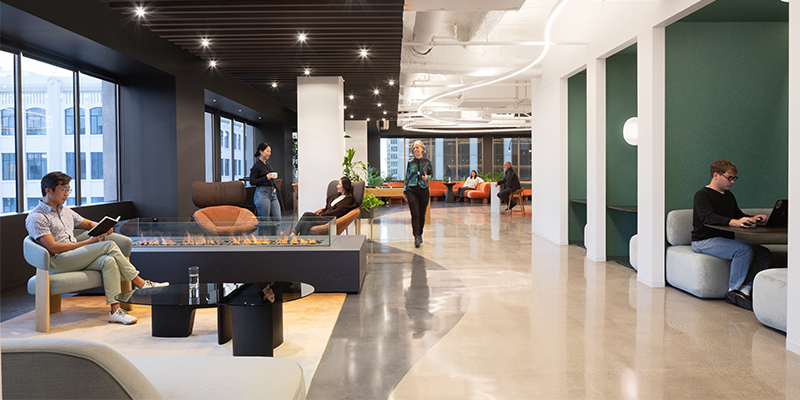In a recent webinar, the authors of the NAIOP Office Space Demand Forecast provided insights and data from the latest report covering the fourth quarter of 2020, including overall economic trends and factors influencing demand, and their predictions for when the office sector could recover in the wake of the COVID-19 pandemic.
The prior economic expansion was the longest on record; job growth was strong, income growth had been accelerating since 2017, and recent tax laws provided valuable incentives for the commercial real estate industry, said Tim Savage, Ph.D., report author and clinical assistant professor, NYU SPS Schack Institute of Real Estate.
However, we shouldn’t lose sight of the fact that the U.S. economy wasn’t entirely healthy prior to the pandemic. “We saw a negative yield curve, and no healthy economy has a negative yield curve,” he pointed out.
Before COVID, commercial real estate had faced a profound technological disruption: from automation, coworking and e-commerce. All of those were reshaping commercial real estate before COVID-19 joined the lexicon. There were already inherent uncertainties about the U.S. economy and how different asset classes would perform.
“When I look at trading in commercial real estate, it looks like bond trading in the early 1970s,” Savage said. “Technology will transform this industry, and COVID has accelerated that transformation.”
The current microeconomic climate shows some promising positive developments – the yield curve and the 10-year U.S. Treasury note are both slowly ticking up – but the labor market remains in distress. First-time weekly unemployment claims remain elevated. And labor force participation, particularly for women, is at levels not seen since the 1970s. COVID-19 has the potential to leave lasting damage to labor markets, however “office-using demand seems insulated from these effects,” according to Savage.
Though as more vaccines and treatments for COVID-19 are introduced, economic uncertainty fades as we see a light at the end of the tunnel.
“Uncertainty seems to recede very rapidly – even more rapidly than I would have thought a month ago,” said Savage.
Next, Savage and Hany Guirguis Ph.D., professor, economics and finance, Manhattan College, discussed the NAIOP Office Space Demand Forecast for Q4 2020, while also emphasizing the challenges of using algorithms in a pandemic.
Guirguis shared the underlying assumptions the two authors used when making their forecast:
- The U.S. economy will gradually recover after Q3 2020.
- The annual forecasted growth rate of real Gross Domestic Product (GDP) for 2021 and 2022 is 4% and 3%, respectively.
- Average unemployment during 2021 and 2022 is forecast to be about 5%.
- Average inflation during 2021 and 2022 is forecast to be about 1.7%.
The forecasts for the years 2021 and 2022 are an average of 18.6 and 69.25 million square feet absorbed, respectively, Guirguis said, adding that the office market should recover by the end of 2021.
He said the highest risks to the U.S. office market that could impact those predictions include:
- Subsequent waves of COVID-19.
- Policy errors or delays and political instability.
- Political structural changes in office space needs after moving working online for so long.
Certainly, demands for office space could continue to fluctuate as companies and employees gradually return to their offices, reevaluate their real estate footprint, lease terms, and long-term strategy.
Read the full NAIOP Office Space Demand Forecast for Q4 2020 online.
NAIOP members can listen to the archived webinar online.








